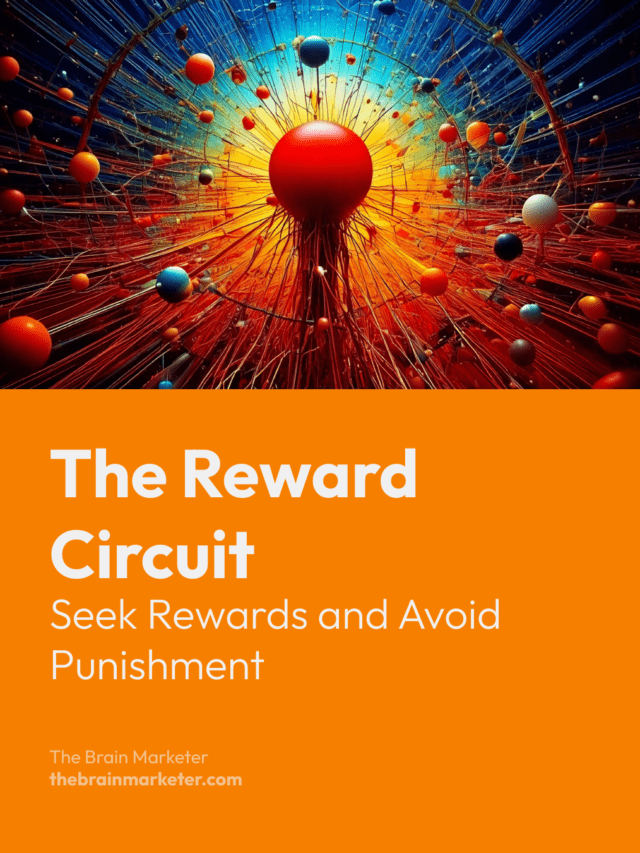Human behavior is deeply shaped by the brain’s tendency to seek rewards and avoid punishment. This fundamental mechanism influences nearly every consumer decision from the products we crave to the services we stay loyal to. At the core of this process lies the reward circuit, a system of brain structures that evaluates, anticipates and responds to positive or negative experiences.
In this article, we explore how the orbitofrontal cortex, amygdala and ventral striatum drive our motivations and how marketers can activate these pathways to build more compelling, emotionally resonant campaigns.
Key Takeaways
- The reward circuit governs how consumers evaluate and pursue rewards.
- The orbitofrontal cortex judges whether a stimulus feels good or bad.
- The amygdala gauges the emotional power of the experience.
- The ventral striatum predicts reward outcomes and assesses relevance.
- Effective marketing triggers these systems using emotion, timing and sensory design.
🎙️ Unpack the Topic with this Podcast
The Orbitofrontal Cortex: Assessing Valence
The orbitofrontal cortex determines the valence of a stimulus, whether it feels rewarding or punishing. In other words, it helps answer the question: “Is this experience good or bad for me?”
Marketing Implication
Marketers can activate positive valence by associating products with desirable emotional outcomes (comfort, prestige or pleasure) while minimizing perceptions of cost, effort or risk.
Example: A luxury car brand emphasizes status, comfort and safety, encouraging consumers to associate the vehicle with positive life enhancement.
The Amygdala: Measuring Emotional Intensity
The amygdala, especially the nucleus amygdalien, plays a crucial role in evaluating the emotional strength of a stimulus. It helps determine whether an experience feels emotionally compelling enough to deserve our attention and action.
Marketing Implication
By using emotional storytelling, rich sensory content and evocative imagery, marketers can amplify the perceived value of a reward.
Example: Premium chocolate ads often highlight indulgence and sensual pleasure, using close-up shots and immersive audio to elevate emotional impact.
The Ventral Striatum: Predicting and Prioritizing Rewards
The ventral striatum supports reward anticipation and relevance. It evaluates how likely a reward is and how meaningful it is in the moment. This is the part of the brain that lights up when we’re about to receive something we truly want.
Marketing Implication
Creating personalized experiences, timely offers or problem-solving narratives helps activate this area, increasing the likelihood of consumer action.
Example: Services like Spotify and Netflix use dynamic recommendations to maintain a steady flow of personalized content, reinforcing habitual engagement through anticipated rewards.
Valence in Practice: Attraction vs. Repulsion
Valence is a core psychological principle. A positive valence draws consumers toward a brand or product, while a negative valence repels them.
Marketing Implication
Frame messaging to either promote positive emotional gains or help the audience avoid negative outcomes, depending on the product or situation.
Examples:
- A fashion label builds desirability through themes of exclusivity and elegance (reinforcing positive valence).
- A wellness brand emphasizes symptom relief and peace of mind (avoiding negative valence).
Conclusion: Activating the Brain’s Reward System
The reward circuit offers powerful insights into why we choose, buy and remain loyal. By understanding how the orbitofrontal cortex, amygdala and ventral striatum work together, marketers can craft strategies that align with the brain’s natural motivations.
When rewards are:
- Framed positively (valence)
- Felt deeply (emotional intensity)
- Timely and relevant (anticipated value)
…they become more than just benefits, they become emotional experiences that stick in memory, drive behavior and build lasting brand attachment.
Sources
- Knutson, B., & Cooper, J. C. (2005). Functional magnetic resonance imaging of reward prediction. Current Opinion in Neurology, 18(4), 411–417.
- Schultz, W. (2000). Multiple reward signals in the brain. Nature Reviews Neuroscience, 1(3), 199–207.
- Rolls, E. T. (2004). The functions of the orbitofrontal cortex. Brain and Cognition, 55(1), 11–29.
- Berridge, K. C., & Kringelbach, M. L. (2015). Pleasure systems in the brain. Neuron, 86(3), 646–664.

Vincent Heimann is a marketing project manager and neuromarketing enthusiast. He founded The Brain Marketer to bridge neuroscience and marketing through accessible, science-based content. With over 10 years of experience in digital strategy, UX/UI and communication, he shares practical insights to help brands connect with the human brain — ethically and effectively

